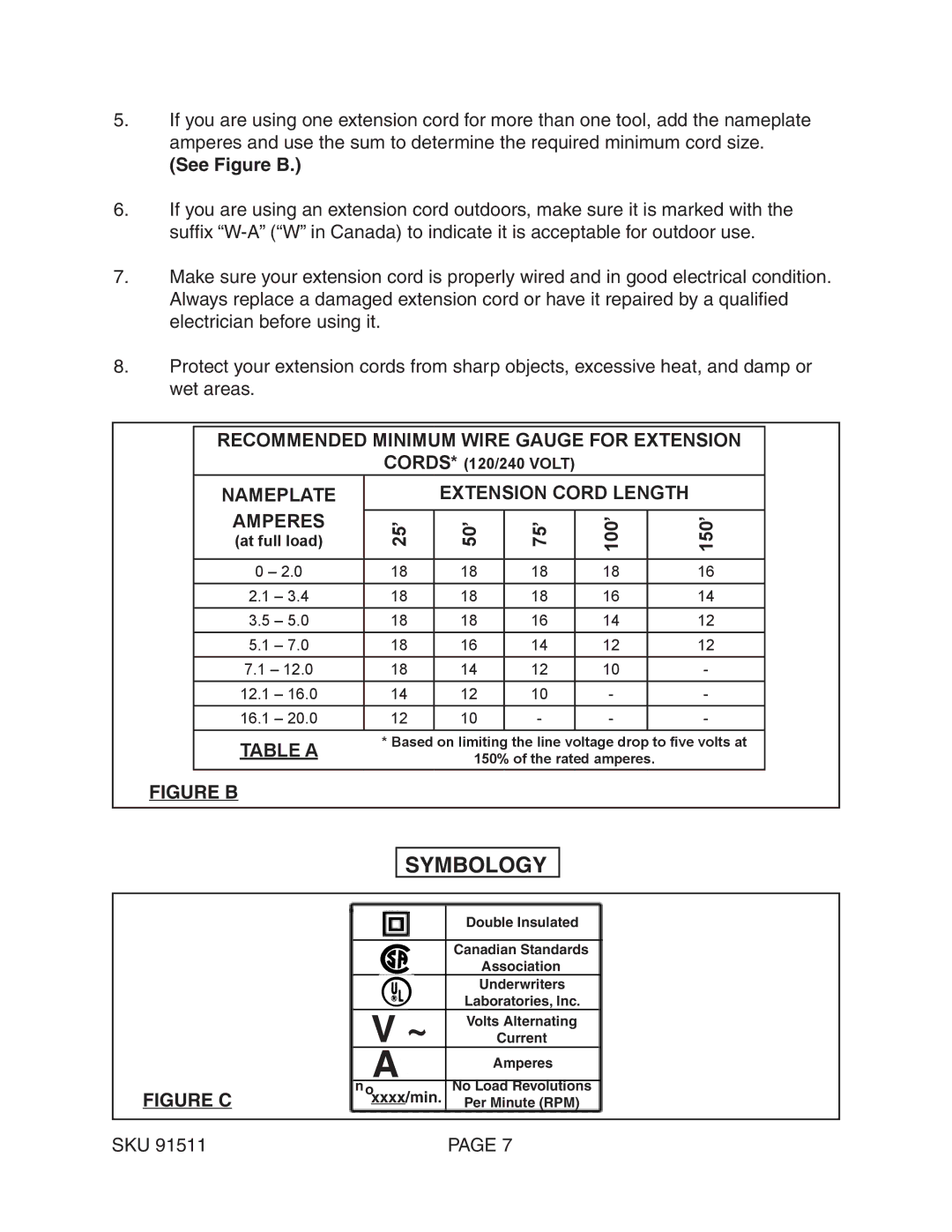
5.If you are using one extension cord for more than one tool, add the nameplate amperes and use the sum to determine the required minimum cord size.
(See Figure B.)
6.If you are using an extension cord outdoors, make sure it is marked with the suffix
7.Make sure your extension cord is properly wired and in good electrical condition. Always replace a damaged extension cord or have it repaired by a qualified electrician before using it.
8.Protect your extension cords from sharp objects, excessive heat, and damp or wet areas.
RECOMMENDED MINIMUM WIRE GAUGE FOR EXTENSION
CORDS* (120/240 VOLT)
NAMEPLATE
AMPERES
(at full load)
0 – 2.0
2.1 – 3.4
3.5 – 5.0
5.1 – 7.0
7.1 – 12.0
12.1 – 16.0
16.1 – 20.0
TABLE A
FIGURE B
EXTENSION CORD LENGTH
25’ | 50’ | 75’ | 100’ | 150’ |
18 | 18 | 18 | 18 | 16 |
18 | 18 | 18 | 16 | 14 |
18 | 18 | 16 | 14 | 12 |
18 | 16 | 14 | 12 | 12 |
18 | 14 | 12 | 10 | - |
14 | 12 | 10 | - | - |
12 | 10 | - | - | - |
|
|
|
|
|
* Based on limiting the line voltage drop to five volts at
150% of the rated amperes.
SYMBOLOGY
|
| Double Insulated |
|
| Canadian Standards |
|
| Association |
|
| Underwriters |
| V ~ | Laboratories, Inc. |
| Volts Alternating | |
| Current | |
| A | Amperes |
|
| |
FIGURE C | n o | No Load Revolutions |
xxxx/min. | Per Minute (RPM) | |
|
|
|
SKU 91511 | PAGE 7 |
